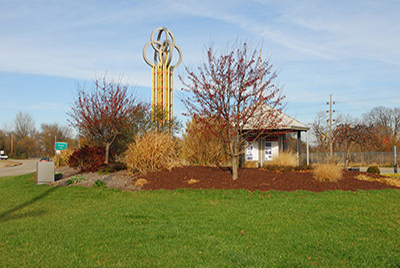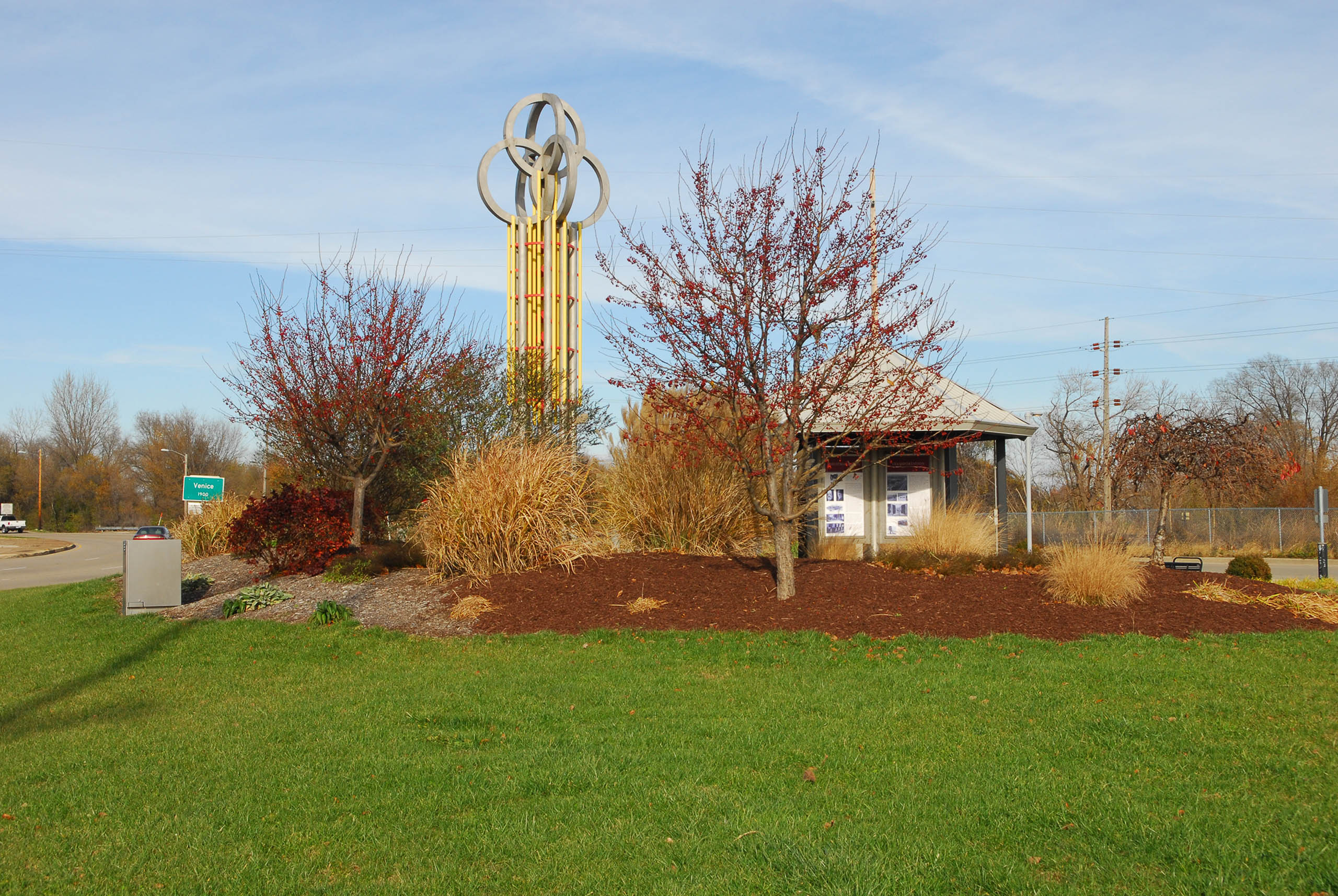



The McKinley Bridge was opened in 1910 and carried the first alignment of Route 66 across the Mississippi River. Named after William B. McKinley, the bridge’s builder and CEO of the Illinois Traction System interurban electric railway (not President William McKinley, as is often mistaken), the bridge was designed with three 519-foot truss spans by Polish American engineer Ralph Modjeski. Originally a toll bridge operated by the city of Venice, the bridge has had a troubled recent history: closed in 2001 due to lack of funding and attention to structural deficiencies, the bridge was reopened in 2007 as a joint vehicular and pedestrian bridge—the latter forming a key crossing in the Great Rivers Greenway.
Tucked in an odd triangle of land where the on-ramp to the McKinley Bridge peels away from the river, and the highway ducks under railroad tracks paralleling the levee, is a modest roadside park. Attached to the Great Rivers Greenway, the McKinley Bridge Roadside Park has an interpretive kiosk, benches and tables, and a large, atomic-looking three-ringed sculpture commemorating the reopening of the bridge in 2007 and symbolizing the connection of the Tri-Cities—Madison, Venice, and Granite City. From the McKinley Bridge—one of the more intimate river crossings in the area—one can see a catalog of US Army Corps of Engineers river training structures. Weirs, dykes, and levees all converge on this site. The recent and experimental chevrons recall a reposed water burial of the Gateway Arch—with arms intended to steer sediment and scour the channel in an effort to minimize dredging needs. River dynamics are notoriously difficult to model and measure, and of the three or four most likely sediment/scour results that were hypothesized with the chevrons, none proved to be the case. The corps may be removing these structures in the coming year. Also visible south of the bridge approach are the ruins of the Venice Power Plant—a small scale, coal-fired plant that, until recently, served the immediate communities.